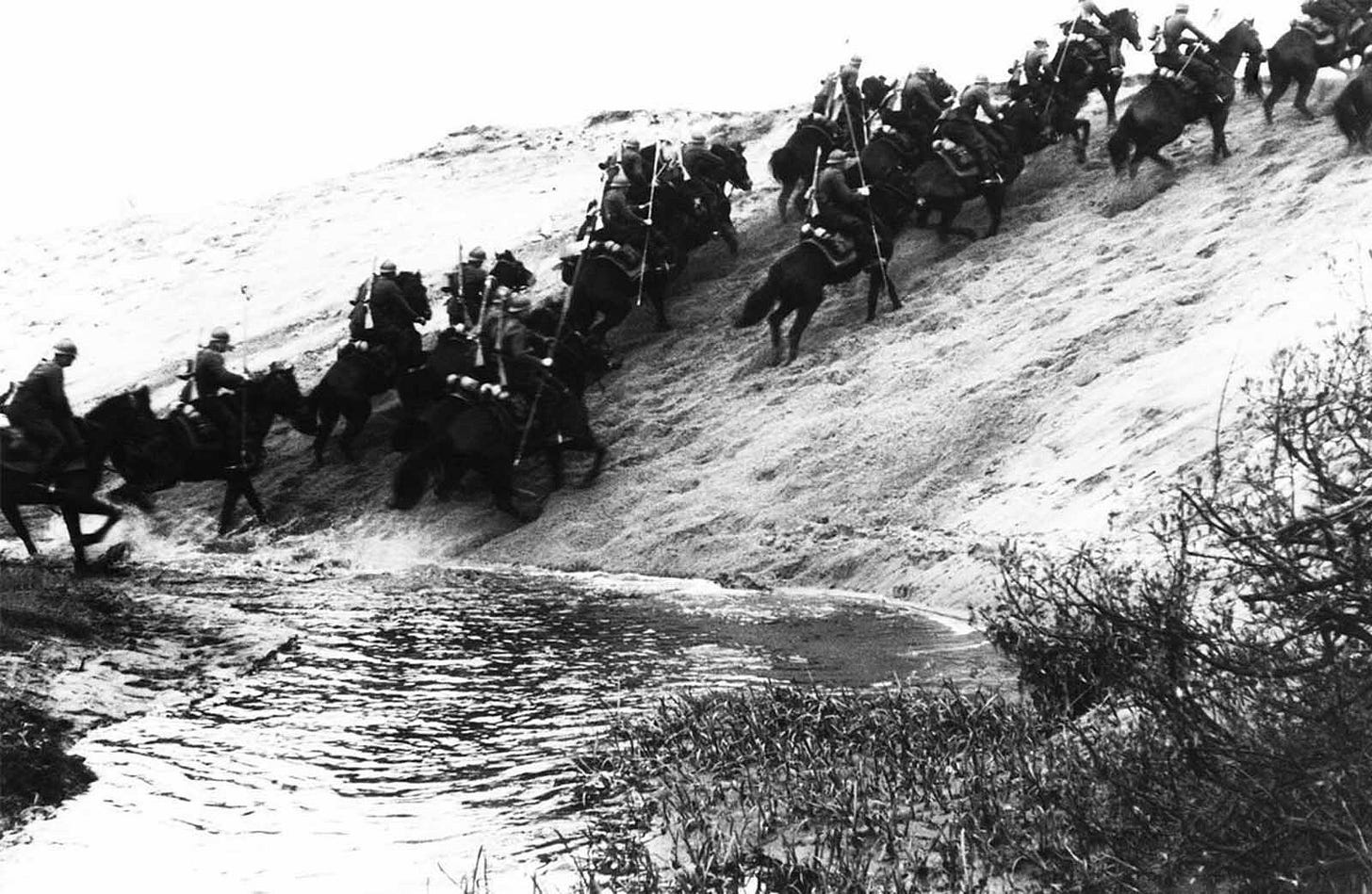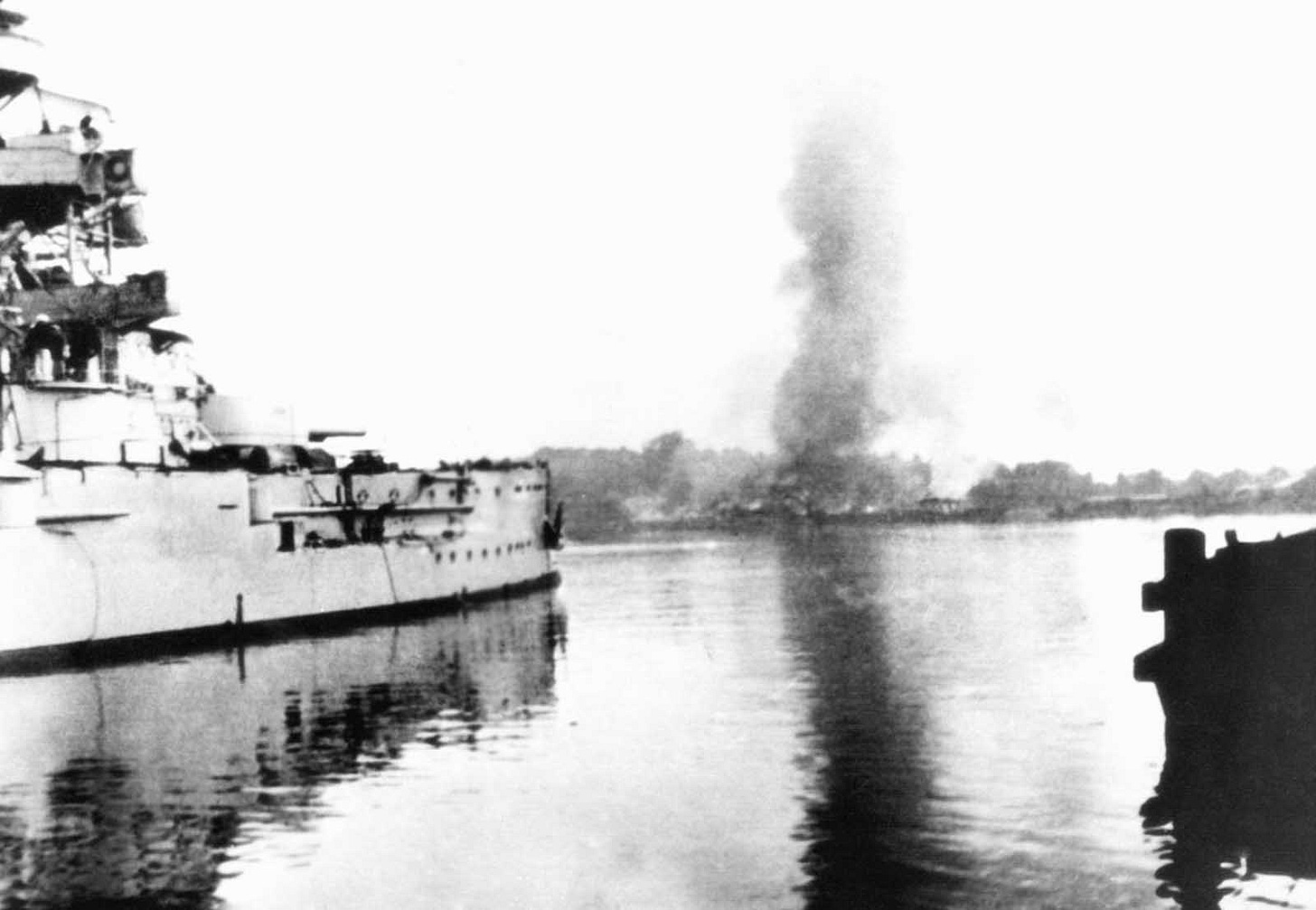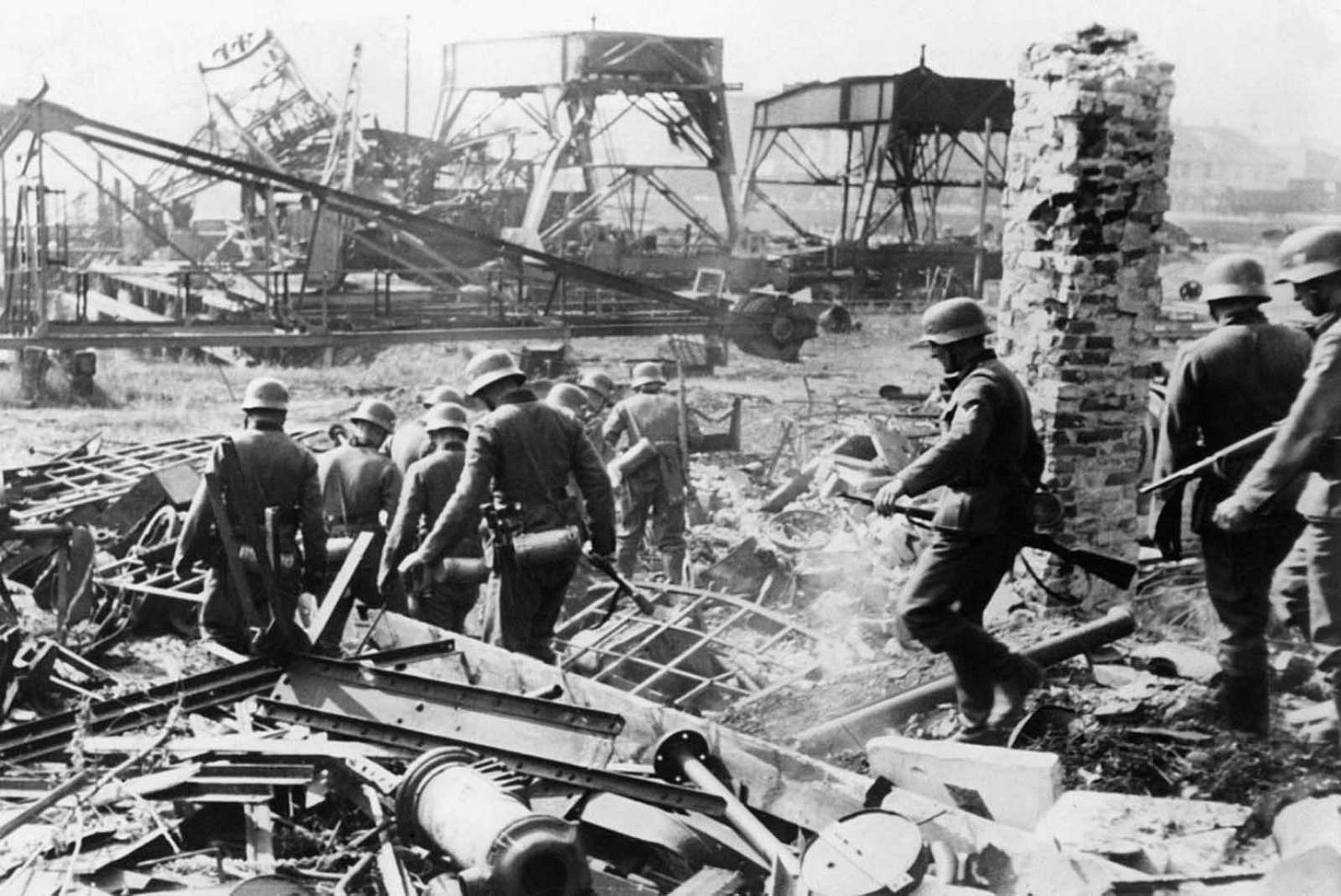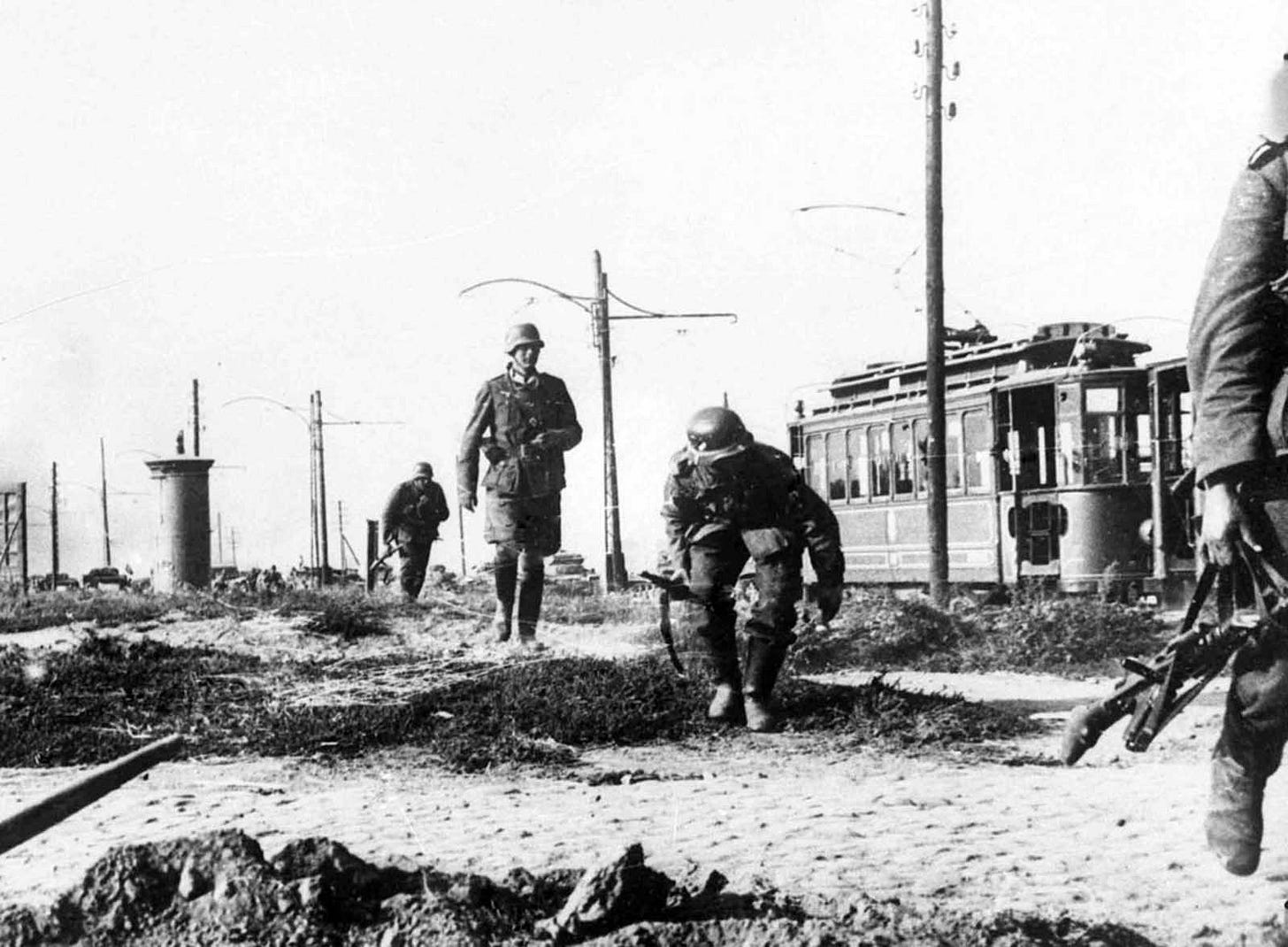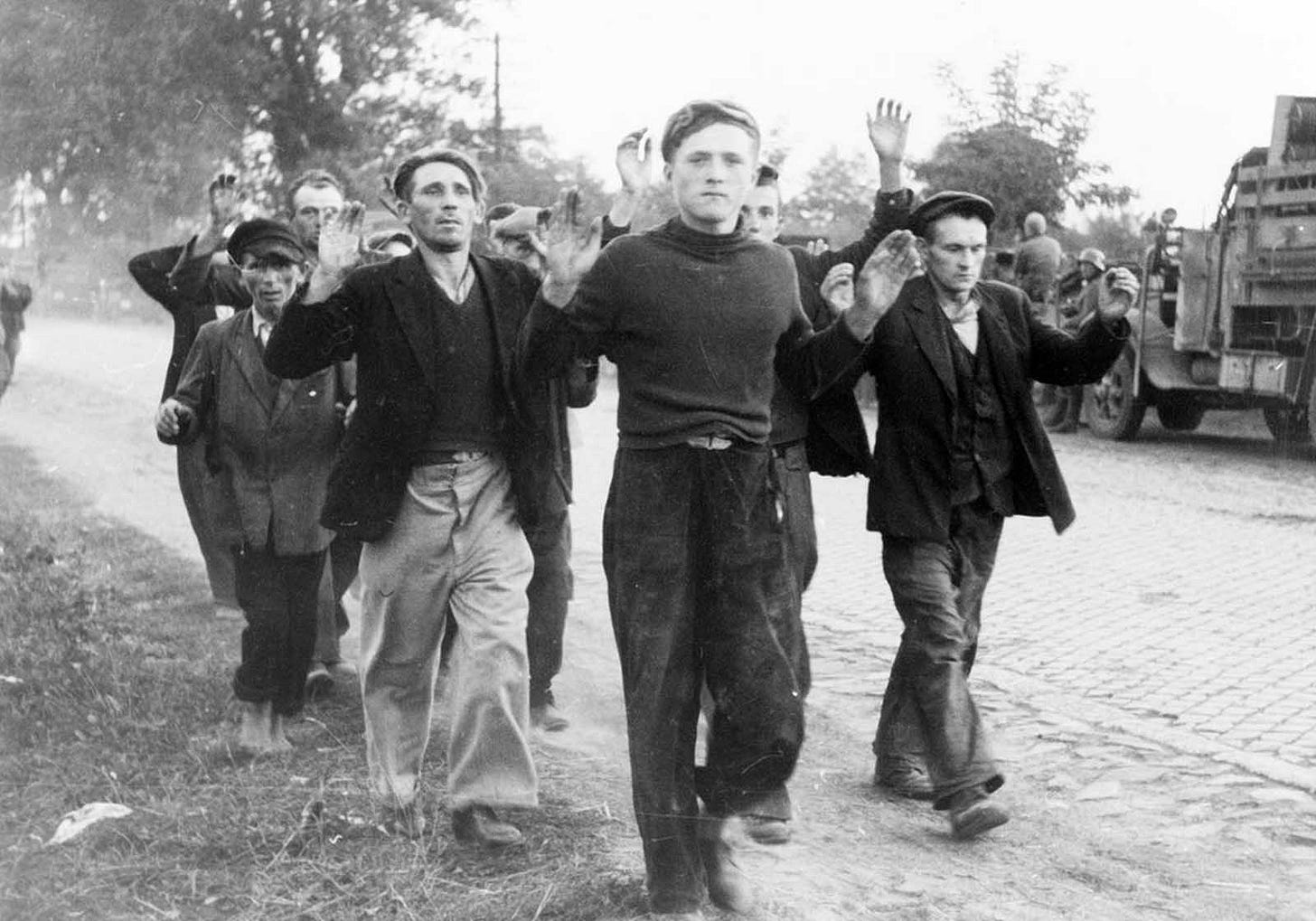1939 Poland: Rare Photos of WWII's Brutal Dawn
An aerial view of an undamaged Polish city, seen from the cockpit of a German Heinkel He 111 P bomber in 1939, just before the invasion.
Despite a potential force of 2.5 million, only around 600,000 Polish troops, organized into 7 armies and 5 operational groups, faced the German invasion on September 1, 1939, hampered by allied pressure and mismanagement.
American journalist John Gunther, writing in December 1939, hailed the German campaign as a "masterpiece," noting it "proved the skill of the German armed forces" despite challenges faced by Poland.
An aerial view of an undamaged Polish city, seen from the cockpit of a German Heinkel He 111 P bomber in 1939, just before the invasion.
German soldiers inspecting Westerplatte on September 7, 1939, after its surrender. A small Polish garrison of fewer than 200 incredibly held off German forces for seven days.
German soldiers inspecting Westerplatte on September 7, 1939, after its surrender. A small Polish garrison of fewer than 200 incredibly held off German forces for seven days.
Explosions erupt across the Polish landscape during a devastating German bombing run in September 1939, marking the brutal start of the invasion.
SS-Leibstandarte Adolf Hitler Division tanks crossing the Bzura River in September 1939, during the pivotal Battle of Bzura, which saw German forces secure most of western Poland.
SS-Leibstandarte Adolf Hitler Division soldiers take a brief rest in a roadside ditch near Pabianice during the arduous 1939 invasion of Poland.
German advance guards and scouts navigating a Polish town ravaged by shelling, during the relentless Nazi invasion in September 1939.
German infantry cautiously advancing on the outskirts of Warsaw, Poland, on September 16, 1939, as the capital braced for siege.
Defenseless Polish civilians, arms raised, walk along a road as prisoners of war during the German invasion in September 1939.

Britain's King George VI addresses the nation from London on September 3, 1939, declaring war and marking the conflict's expansion beyond Poland.
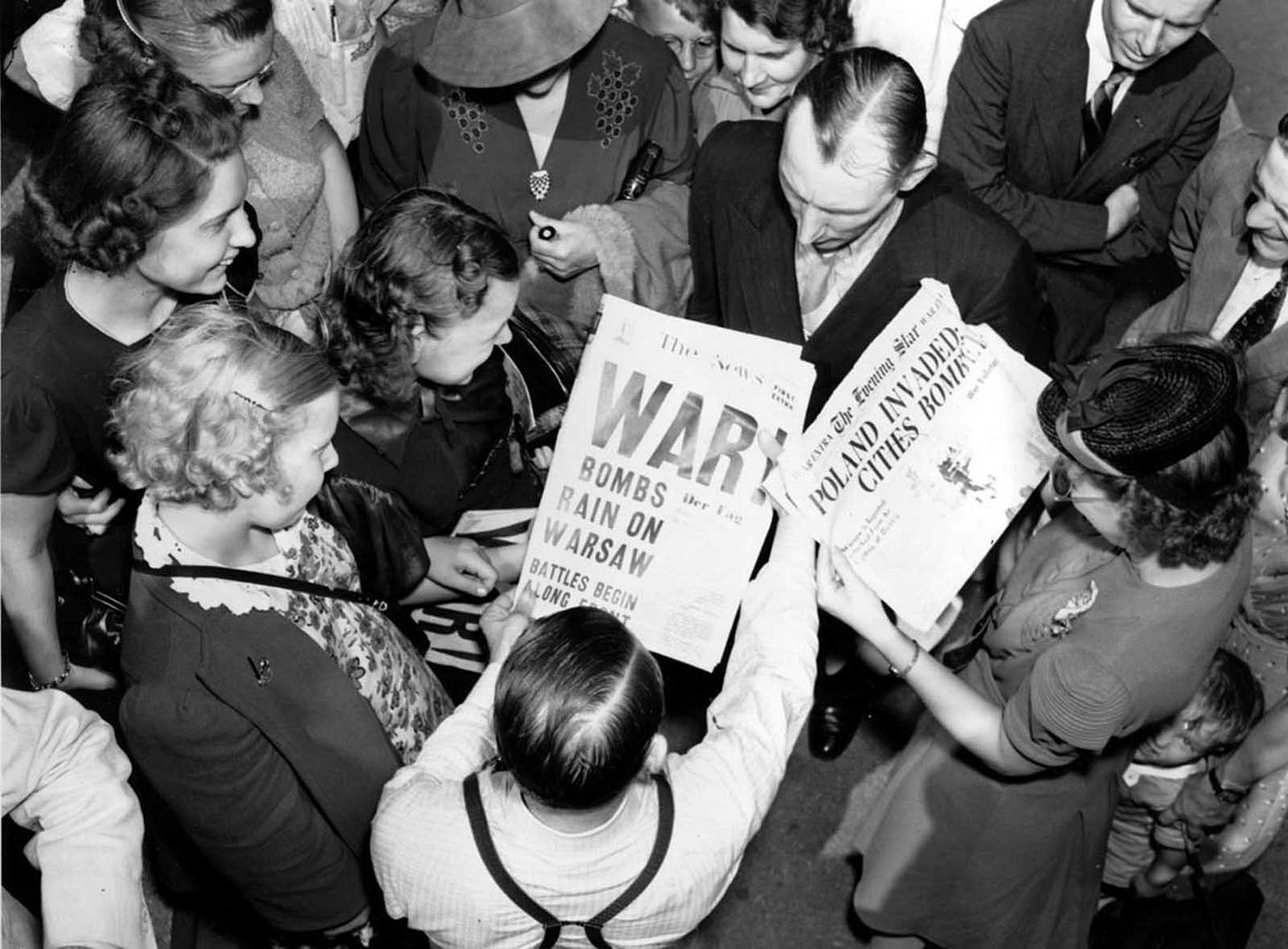
A crowd in Washington D.C. reads 'Bombs Rain On Warsaw' headlines outside the U.S. State Department on September 1, 1939, as diplomats discuss the escalating European conflict.
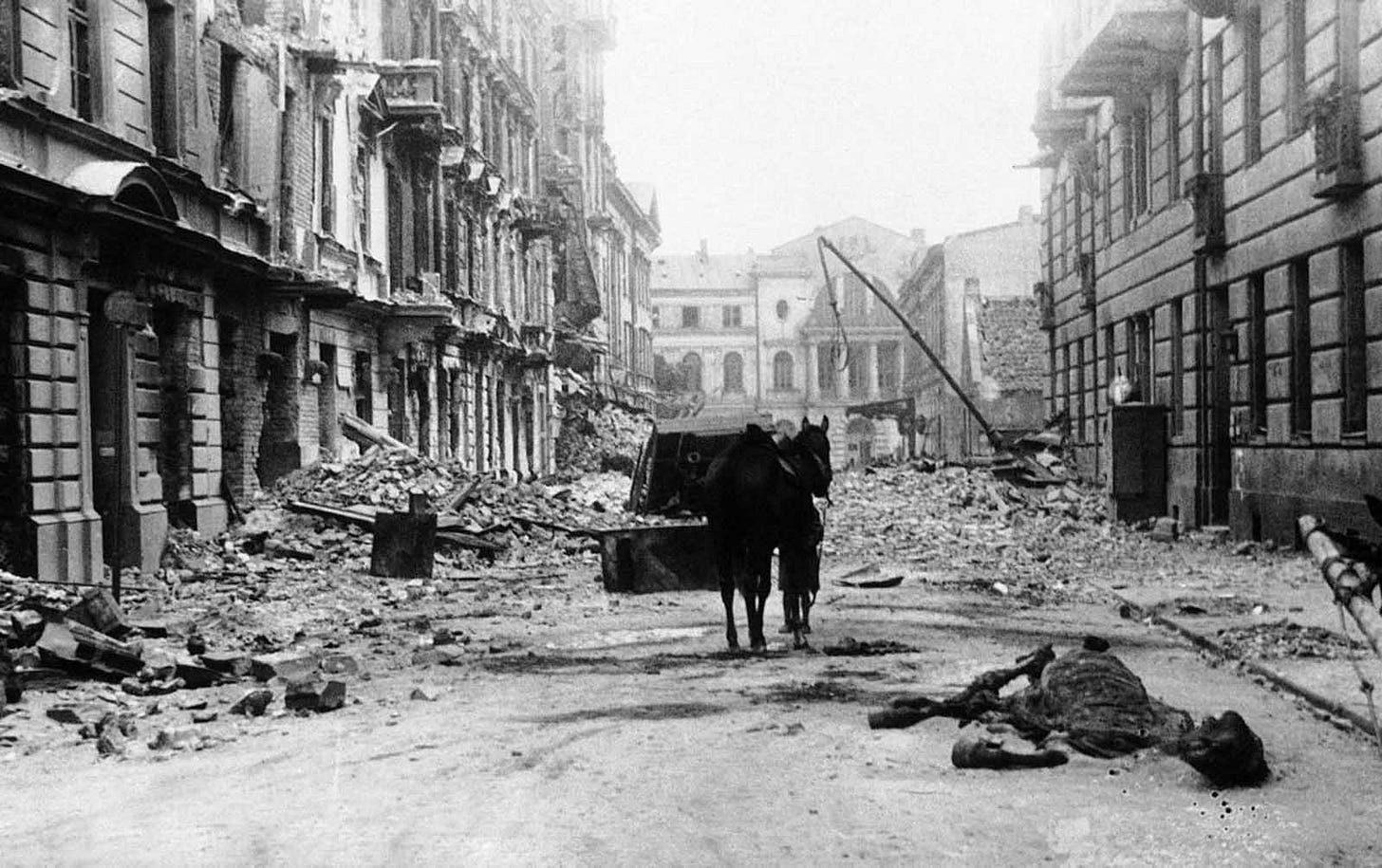
Devastation on Ordynacka Street in Warsaw, March 6, 1940, with debris and a dead horse. Warsaw endured constant bombardment during the 1939 invasion, including 1,150 sorties dropping 550 tons of bombs on September 25 alone.
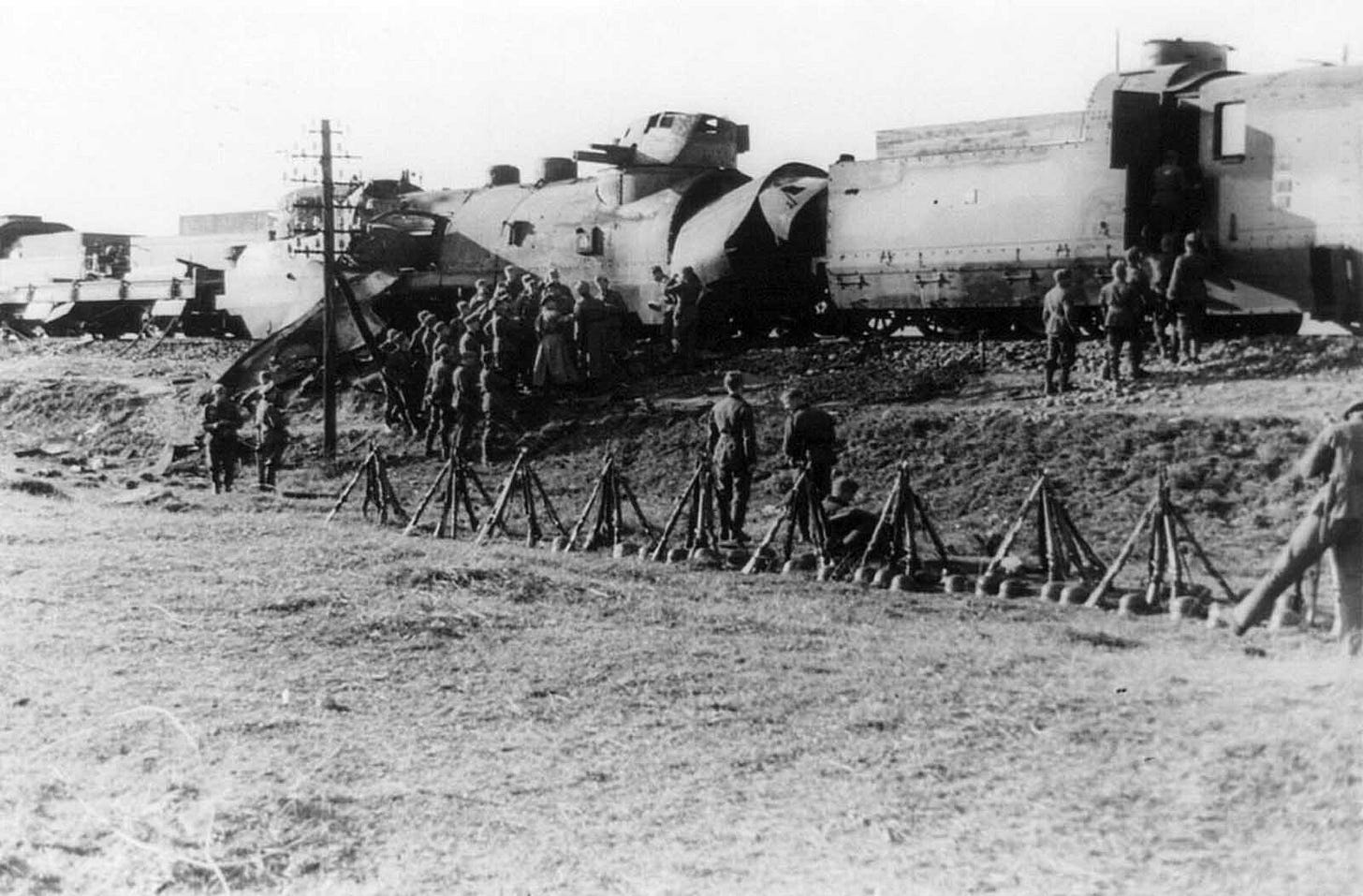
A damaged Polish armored train, laden with captured tanks, near Blonie. This was seized by the 14th SS-Leibstandarte Adolf Hitler Division during the September 1939 invasion.

German soldiers, captured by the Polish army during the Nazi invasion, held as prisoners in Warsaw on October 2, 1939.

A young Polish boy sits amidst the ruins of his home in Warsaw during a lull in the relentless German air raids in September 1939, as the city bravely held out until its surrender on September 28.




